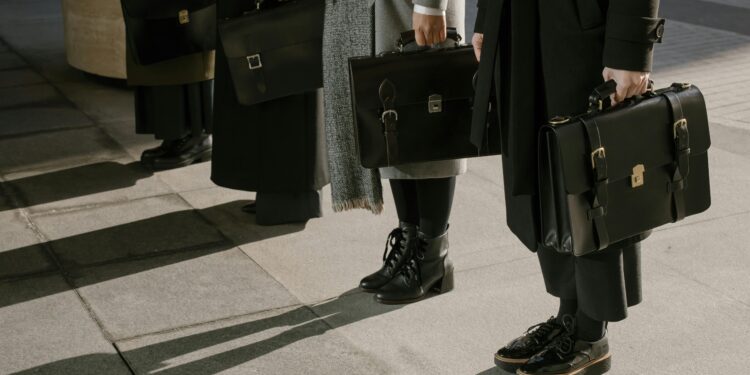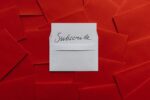Quiet Luxury and the Anti-Logo Rebellion: Minimalism as the New Status Symbol

For decades, luxury fashion has been synonymous with bold logos, loud branding, and unmistakable displays of wealth. But as fashion cycles shift and generational tastes evolve, a new movement is taking hold: quiet luxury.
Unlike the splashy designs of the early 2000s or the logomania of streetwear, silent luxury emphasises subtle craftsmanship, minimalist aesthetics, and label-free distinction. In an era where social media amplifies every choice, quiet luxury offers a countercultural signal: true status doesn’t need to shout; it whispers.
Defining Quiet Luxury
At its core, quiet luxury is a design philosophy that values timeless silhouettes, premium fabrics, and impeccable tailoring over obvious logos. Think cashmere coats from The Row, leather totes by Bottega Veneta, or understated watches by Patek Philippe. These are pieces recognised not by their visible branding but by their aesthetic sophistication and tactile quality.
For many, it’s not just a look. It’s a fashion ethos. Hushed luxury resists the cycle of disposable fast fashion and embraces slow, deliberate consumption.
Why Millennials and Gen Z Are Driving It
Younger generations have grown up in a world oversaturated with branding. Gen Z, in particular, raised on Instagram and TikTok, can spot a logo-heavy bag in seconds, but they are increasingly gravitating toward subtler forms of expression.
Key drivers include:
- Sustainability concerns: Hushed luxury often emphasises durable materials and longevity.
- Economic signalling: Ironically, minimalism can be more expensive. A plain Loro Piana sweater costs more than many logo-heavy streetwear pieces, signalling wealth without flash.
- Aesthetic preferences: TikTok aesthetics like clean girl, Scandi minimalism, and old money style align directly with understated affluence.
Quiet Luxury vs. Silent Luxury
While often used interchangeably, there’s nuance between the two.
- Quiet luxury embraces subtle branding and minimalist aesthetics while still being recognisable to those “in the know.”
- Silent luxury goes even further. It’s about choosing deliberately anonymous designs, where even insiders may not identify the brand.
For example, a Bottega woven bag is a quiet luxury, while an unbranded artisanal leather tote from a niche designer might be considered silent luxury.
The Psychology of the Anti-Logo
Logos were once shorthand for aspiration, but in today’s cultural logic, they can be read as trying too hard. Quiet luxury signals confidence and insider knowledge. The idea is: if you know, you know.
Sociologists point out that this shift reflects a broader cultural move away from conspicuous consumption toward connoisseurship: valuing expertise, discernment, and taste over excess.
The Bag Brands and Watches Leading the Charge
These days, certain bag brands and watchmakers have become synonymous with quiet luxury.
- Bag Brands: The Row, Loewe, Bottega Veneta, Loro Piana
- Watches: Patek Philippe, Vacheron Constantin, Jaeger-LeCoultre
These labels lean on craftsmanship, heritage, and design integrity rather than plastering their logos across products. Interestingly, TikTok communities are even creating “spotter’s guides” for these pieces, teaching others how to recognise “quiet” brands without the logo.
Quiet Luxury in Pop Culture
The rise of shows like Succession and The White Lotus has put quiet luxury into the mainstream. The characters’ wardrobes, filled with muted tones, fine fabrics, and logo-free accessories, reflect how power and wealth are often coded in minimalist dressing.
This media influence has spilt into fashion communities online, where hashtags like #quietluxury and #stealthwealth trend alongside aesthetic breakdowns of celebrity outfits.
Aesthetic Influence on Everyday Fashion
While not everyone can afford muted luxury items, the aesthetic influence trickles down. High-street and mid-range retailers now create capsule wardrobes inspired by minimalist design, offering neutral palettes, clean silhouettes, and subtle materials.
In this sense, quiet luxury is not just about exclusivity. It’s reshaping what consumers across price brackets consider aspirational.
Critiques and Counterpoints
Not everyone buys into the anti-logo rebellion. Critics argue that quiet luxury can be exclusionary, since unbranded minimalism often comes at a higher price point than logo-heavy pieces. Some also note that it risks creating a new hierarchy of “in the know” versus outsiders.
Others highlight a cultural tension: while Western consumers embrace minimalist aesthetics, in other markets (like parts of Asia and the Middle East), logos, prints, patterns, and unique silhouettes remain an important expression of success and individuality.
Key Takeaways
- Quiet luxury represents a shift from conspicuous to inconspicuous consumption, emphasising craftsmanship and subtlety.
- Millennials and Gen Z are leading this shift, driven by sustainability, aesthetics, and cultural cues.
- Quiet vs. silent luxury reflects degrees of minimalism and brand anonymity.
- Pop culture and TikTok aesthetics amplify the trend, while critiques remind us of its exclusivity.
- The ethos now extends into lifestyle domains, shaping interiors, dining, and beyond.
Beyond Fashion: The Quiet, Luxe Lifestyle
Quiet luxury has expanded beyond clothes and accessories into home design, dining, and travel. Minimalist interiors, boutique hotels, and farm-to-table dining experiences all echo the same ethos: understated refinement over loud extravagance.
For many Millennials and Gen Z, adopting quiet luxury isn’t just a wardrobe choice. It’s a lifestyle orientation.
Overconsumption and fast fashion supply chains can be unconscious choices for most, but this quiet revolution continues to shape how the next generation of consumers exerts their purchasing power, be it with understated finesse or a branded polish.








